Before European settlers, the Potawatomi people called this land home. Waukesha’s name is derived from the Potawatomi word “Wauk-tsha,” meaning “fox.” In the 1830s, European-American pioneers, drawn by abundant water and fertile soil, began to move to the area. The beautiful Fox River was the lifeblood of the community.
Waukesha witnessed a boom in the late 19th century as it gained fame for its healing springs. The city became a popular resort destination, earning the title “Spring City” for its therapeutic waters. The city is home to the oldest college in the state, Carroll University, which predated state formation with its founding in 1846 and has been a key institution of higher education ever since. Waukesha was also the birthplace of famed musician Les Paul.
Waukesha’s community spirit has flourished over the years, marked by bustling downtown streets, historic architecture, and a commitment to education and the arts. Today, Waukesha stands as a vibrant blend of history and progress. From its thriving local businesses to its picturesque parks, the city continues to evolve while cherishing its heritage.
Thanks to Recollection Wisconsin content partners for contributing these and many more images! Carroll University’s Todd Wehr Memorial Library, UW Digital Collections, Milwaukee Public Library.
View the Waukesha County History Collection and Milwaukee Public Library Historic Photo Collection, and Carroll Photograph Collection for more images.
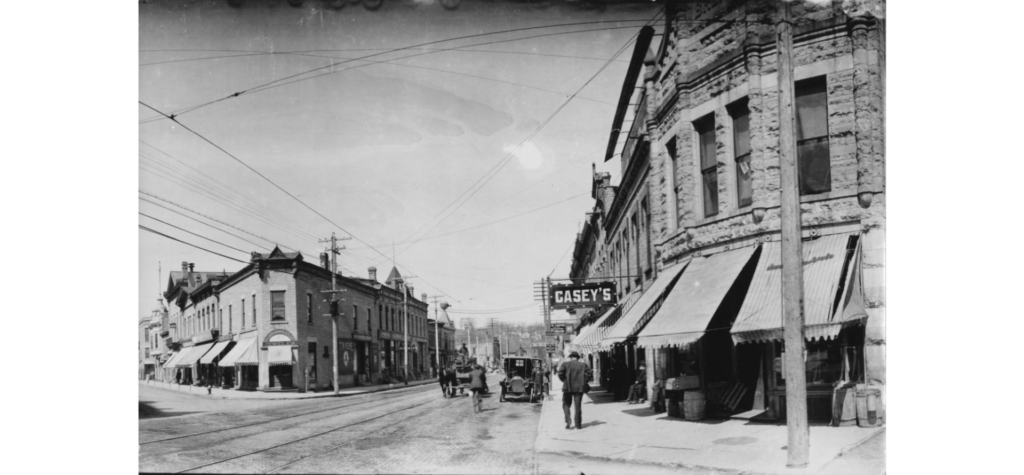
Long shot of Five Points in downtown Waukesha looking northwest on West Broadway Ave. In the right foreground is Brehm Brothers store at 342 West Main Street. Directly to the left of Brehm Brothers, is a sign for Casey’s, a saloon at 402 West Broadway. On the left, across the street, William B. Kimball’s jewelery store sign can be seen above the awning. The jewelry store was located at 408 West Main Street. Both a car and a horse pulling a wagon are using the cobblestone street. Electric poles and wires can be seen along the sidewalks. Five Points is the intersection of West Main Street, West Broadway Street and Grand Avenue in Waukesha. UW Digital Collections.
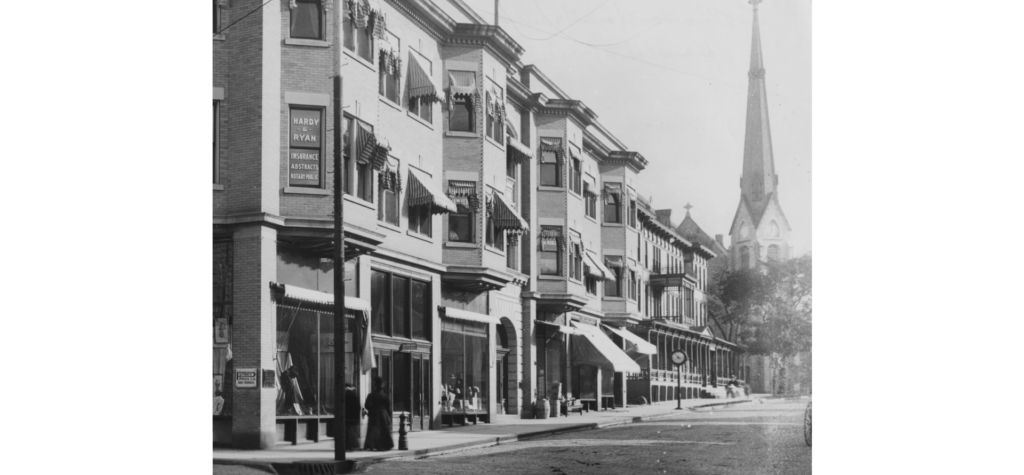
Southeast view of Putney Brothers store located on North Grand Avenue in Waukesha. The three-story brick building has two-story oriel windows. Awnings cover windows on the second and third floors. Below roof line are ornamental dentil blocks. Long view of the cobblestone street. A street clock is on the sidewalk in the middleground. Steeple in background on right is First Baptist Church on Wisconsin Avenue. UW Digital Collections.
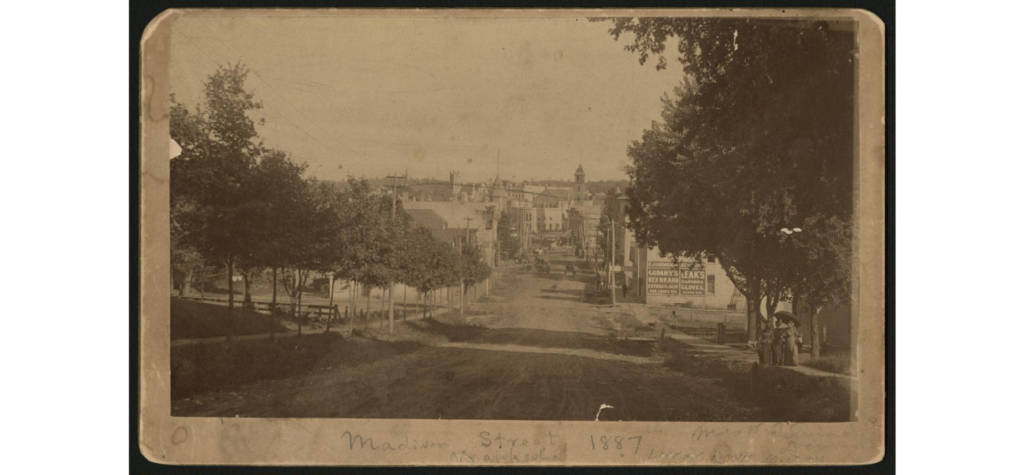
Long shot of Madison Street looking east toward downtown Waukesha. Trees line the dirt road. Three women in the right foreground walk on the sidewalk. One woman carries a parasol. A child and a dog are walking a half a block behind the women. Horses and wagons use the dirt road. Center of city skyline shows the bartizan and flagpole of Louis Yanke Saloon. UW Digital Collections.
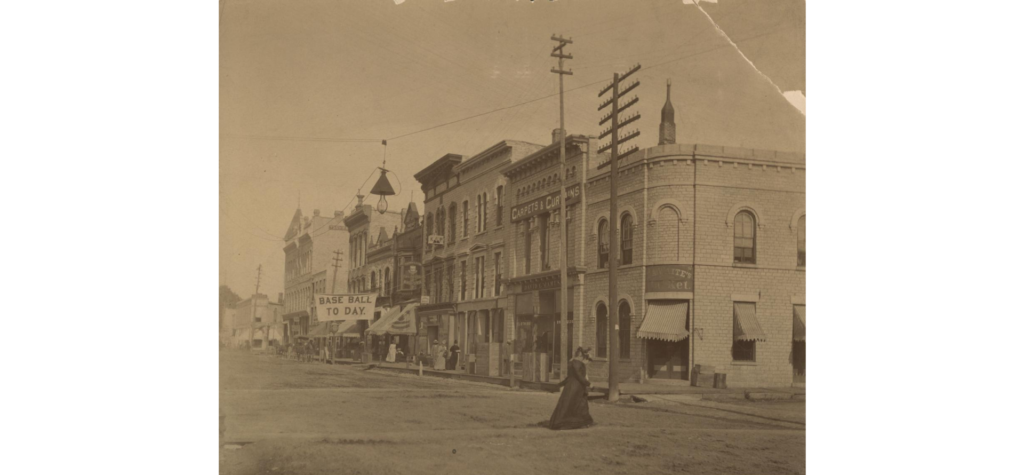
Medium shot of West Main Street looking east from Clinton Street in Waukesha. The storefronts are on the south side of the street. On the corner is John A. Waite’s meat market at 337 West Main Street (at the time of the photograph the address was 74 Main). next to Waite’s to the left is David C. James’ tailor shop at 335 West Main Street (at the time of the photograph the address was 76 Main). People can be seen walking on the plank sidewalks. Two women in the foreground cross the dirt road. Signs have been placed on the fronts of the buildings. Another sign hangs over the road reading: “Base Ball To Day.” The photograph demonstrates the variations of the stone buildings in downtown Waukesha. UW Digital Collections.
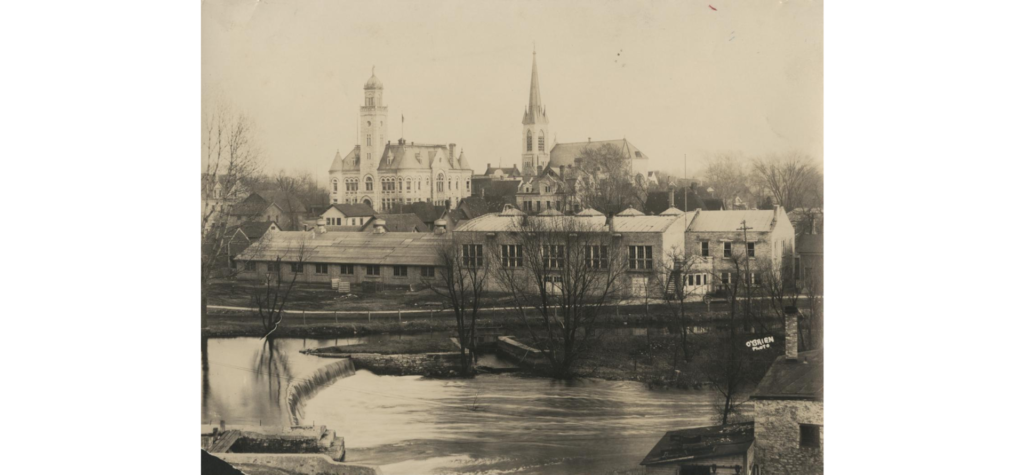
Long shot looking south of Waukesha Sales Pavilion, Waukesha County Courthouse and St. Joseph’s Catholic Church. The Barstow Street dam in the Fox River can be seen in the foreground. The roofs of homes on West Main Street can be seen behind the Sales Pavilion. UW Digital Collections.
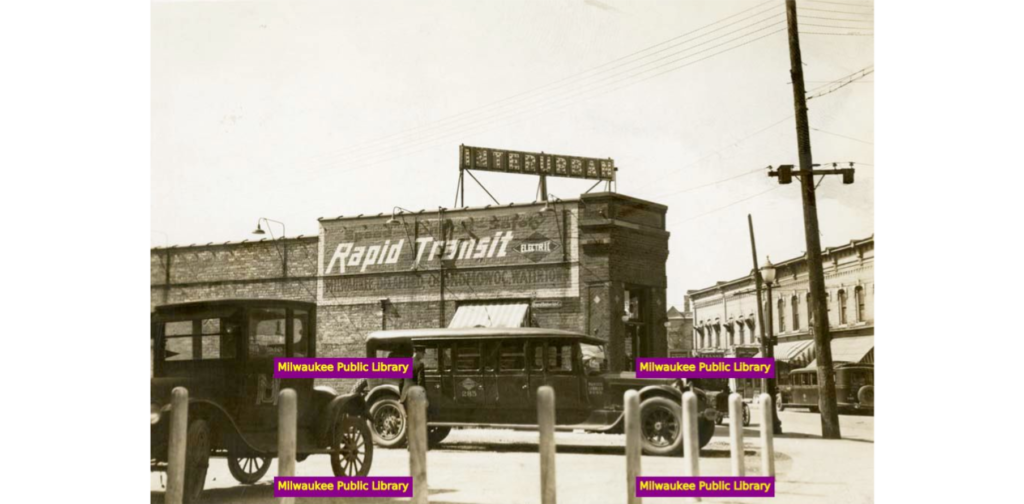
This photo shows an early view of a Waukesha street corner. A brick building has an electric sign that reads “Interurban”. On the side of the building is a sign advertising the rapid transit service of the Milwaukee Electric Railway and Light (TMER&L) Company. An early model bus sits in front of the building. Milwaukee Public Library.
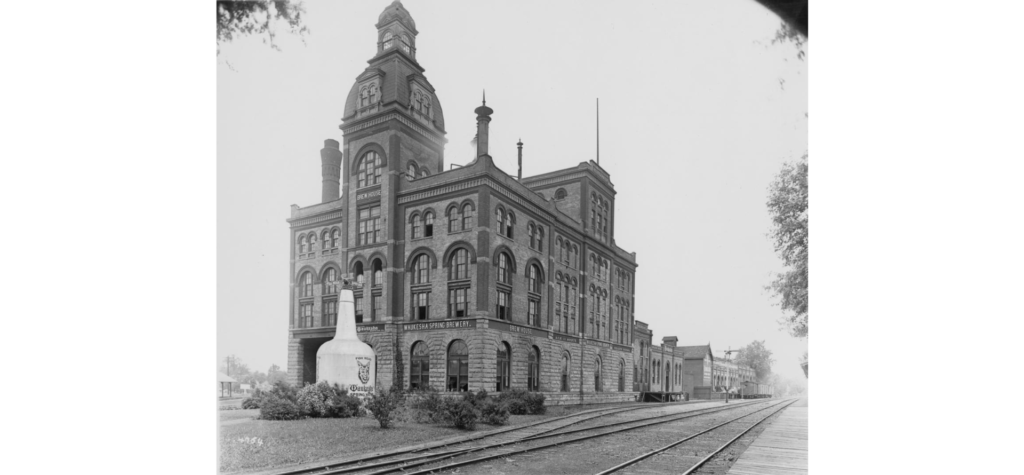
Exterior photograph of Waukesha Spring Brewing Company located at 227 Maple Avenue near Williams Street in Waukesha. The brew house is made of stone and brick. It features arched windows and a four-sided tower with cupola above the front entrance. Railroad tracks can be seen in the right foreground. The large “Fox Head” bottle in the foreground is the spring house. UW Digital Collections.
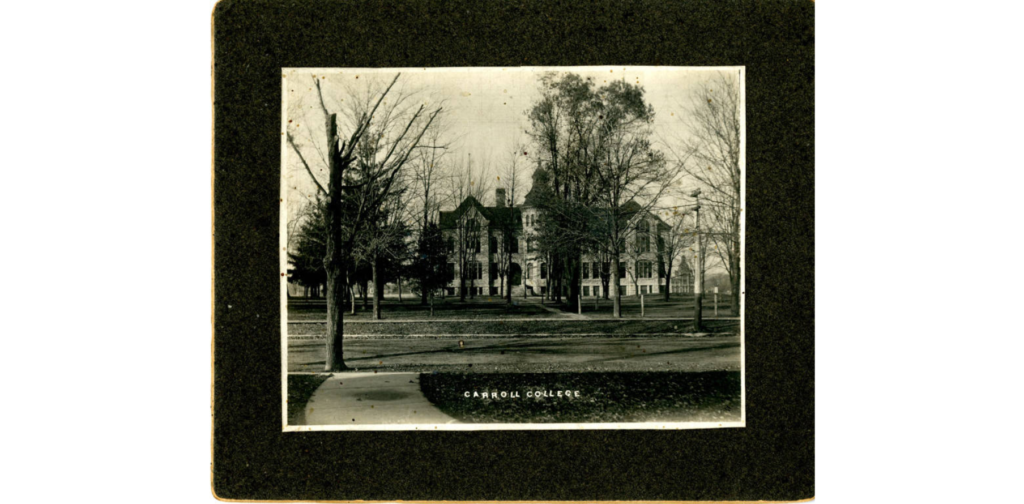
Carroll University Todd Wehr Memorial Library.
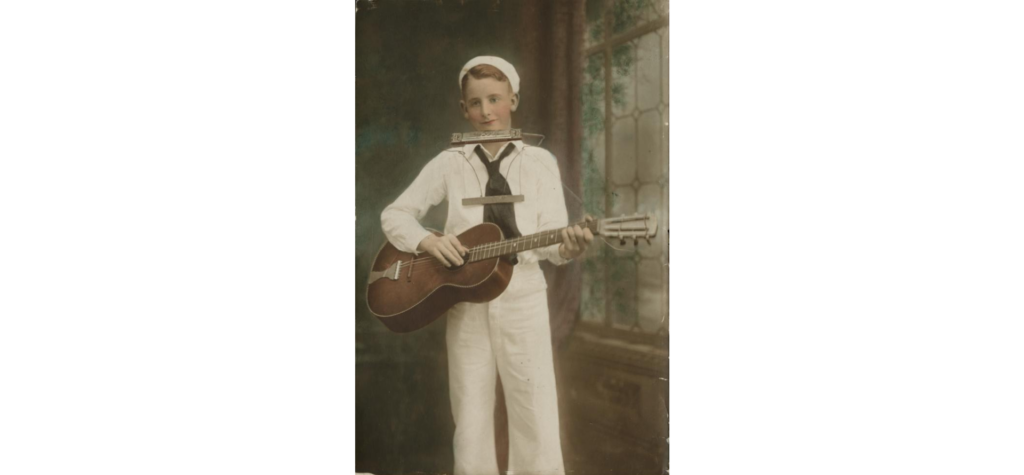
Portrait of Les Paul wearing a sailor outfit. Paul poses with his acoustic guitar and harmonica. Lester Polfuss, better known as Les Paul, is best known for creating the solid body electric guitar. UW Digital Collections.
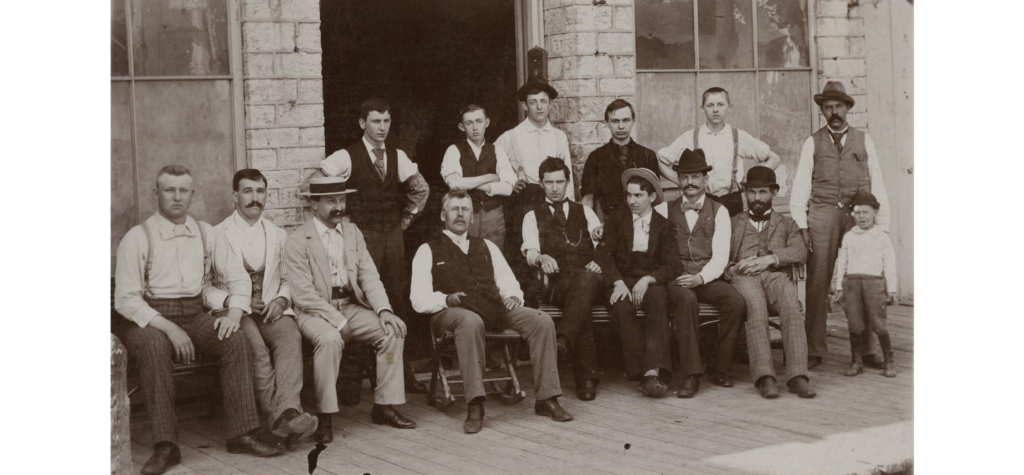
Close shot of men posed on the front stoop of the Wauksha Dispatch Newspaper located at 324 West Main Street in Waukesha. Stone building with large windows can be seen in the background. A young boy stands at the right. UW Digital Collections.



You must be logged in to post a comment.